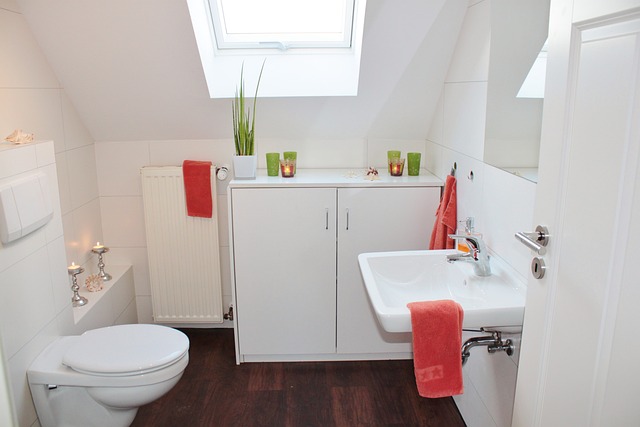Understanding the root cause of a running toilet—often a leaky flush valve or faulty flapper—is key to effective repair. With the right tools (bucket, plunger, replacement parts) and knowledge of tank components (flapper, sealant, fill valve), you can identify and replace problematic parts, stop water flow, reduce noise, and save money by avoiding unnecessary plumber visits. This step-by-step guide emphasizes identifying and fixing leaky valves, disassembling/reassembling the tank, and testing toilet function after repairs.
Tired of a toilet that never stops running? Don’t call a plumber just yet! Learn how to fix a running toilet yourself with our step-by-step guide. Identify the cause, gather the right tools, and follow simple instructions to stop the constant flow. Say goodbye to wasted water and money—and master a common home repair. Discover the secrets to effectively addressing this annoying issue, making you the handyman (or woman) of your household.
- Identify the Cause of the Running Toilet
- Gather the Necessary Tools and Materials
- Step-by-Step Guide to Fixing the Running Toilet
Identify the Cause of the Running Toilet

Many people struggle with the frustrating issue of a running toilet, but understanding the cause is the first step in learning how to stop it. The most common culprits are a leaky flush valve or a faulty flapper. A leaky flush valve occurs when water continues to flow into the toilet bowl after each flush, while a faulty flapper can cause water to leak from the tank into the bowl constantly.
Identifying these issues is key before attempting any DIY repairs. Check for signs of water accumulation in your toilet’s tank and observe if water stops flowing after a few seconds or not at all. These indicators will guide you in tightening, replacing, or adjusting the relevant parts to finally put an end to the running toilet and save you from unnecessary plumber visits.
Gather the Necessary Tools and Materials

Before you begin your DIY adventure to fix a running toilet, make sure you have the right tools and materials on hand. This typically includes a bucket, plunger, replacement flapper (a crucial component that sits below the toilet), plumber’s tape or silicone sealant, and a new fill valve assembly if needed. These items are readily available at your local hardware store and will equip you to tackle this common plumbing issue head-on.
Understanding how these parts work together is key to successfully stopping a running toilet. The flapper covers the overflow pipe, preventing water from constantly flowing in. Plumber’s tape or sealant creates a watertight seal around the base of the toilet, while the fill valve controls the water level inside the tank. By replacing these components and ensuring proper sealing, you’ll put an end to that incessant running sound and save yourself some money in the process.
Step-by-Step Guide to Fixing the Running Toilet

Step-by-Step Guide to Fixing the Running Toilet
If your toilet is constantly running, don’t panic! A running toilet can waste a significant amount of water each day, but fixing it yourself is easier than you think. Start by identifying the source of the problem. Most often, this stems from a leaky flush valve or a broken fill valve.
Turn off the water supply to your toilet (usually two valves behind the toilet) and disassemble the tank. Inspect all components for wear or damage, especially the flapper and fill valve. A worn-out flapper can cause continuous flushing, while a stuck float or improperly adjusted fill valve can lead to a constant flow of water into the tank. Replace any faulty parts with new ones designed for your toilet model. Once replaced, reassemble the tank, turn on the water supply, and flush the toilet several times to ensure everything is working properly.
Fixing a running toilet is an easy, cost-effective task that you can tackle yourself. By identifying the root cause and using the right tools and materials, you can stop the constant flow of water and save money on potential plumbing bills. With a bit of patience and these simple steps, you’ll have a steady toilet in no time, ensuring your home stays comfortable and efficient.
